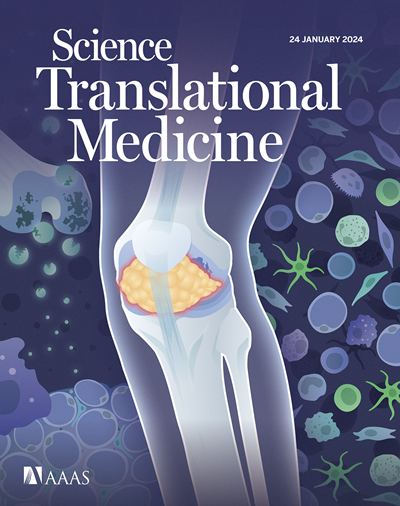Hindbrain octadecaneuropeptide gliotransmission as a therapeutic target for energy balance control without nausea or emesis
IF 14.6
1区 医学
Q1 CELL BIOLOGY
引用次数: 0
Abstract
Glia play a dynamic role in central nutrient sensing and appetite regulation yet represent underexplored targets in treating dysregulated energy balance. Glia within the dorsal vagal complex of the hindbrain synthesize the anorexigenic peptide octadecaneuropeptide (ODN), the influence and therapeutic potential of which remain to be explored. We demonstrate that hindbrain-targeted ODN induced weight loss, counteracted glucoprivation, and improved glucose clearance in rats. Furthermore, blocking central ODN signaling attenuated the anorectic response to GLP-1R agonists in rats. Peripheral administration of an ODN derivative, TDN, improved insulin sensitivity assessed by hyperinsulinemic-euglycemic clamp in obese mice and induced weight loss without pica behavior, a proxy for nausea in rats, or emesis in the musk shrew, a vomiting mammalian model. Central ODN and TDN treatment in rats was not accompanied by changes in core body temperature, physical activity, or heart rate. This work highlights hindbrain ODN signaling as an important modulator of energy balance and demonstrates the potential for targeting this gliopeptide system to treat dysregulated feeding and metabolic activity without side effects.
后脑八肽胶质传递作为能量平衡控制的治疗靶点,无恶心或呕吐
神经胶质细胞在中枢营养感知和食欲调节中起着动态作用,但在治疗能量平衡失调方面尚未得到充分的研究。后脑背迷走神经复合体内的胶质细胞可合成厌氧肽octadecanep肽(ODN),其影响和治疗潜力仍有待探索。我们证明,后脑靶向ODN诱导大鼠体重减轻,抵消葡萄糖活化,并改善葡萄糖清除率。此外,阻断中枢ODN信号可以减弱大鼠对GLP-1R激动剂的厌食反应。外周给药ODN衍生物TDN可以改善肥胖小鼠的胰岛素敏感性,通过高胰岛素-血糖钳钳评估,并诱导体重减轻,但没有异食癖行为(大鼠恶心的代用物)或麝香鼩呕吐(呕吐哺乳动物模型)。大鼠中枢性ODN和TDN治疗不伴有核心体温、身体活动或心率的变化。这项工作强调了后脑ODN信号作为能量平衡的重要调节剂,并证明了靶向这种胶质肽系统治疗进食和代谢活动失调而无副作用的潜力。
本文章由计算机程序翻译,如有差异,请以英文原文为准。
求助全文
约1分钟内获得全文
求助全文
来源期刊

Science Translational Medicine
CELL BIOLOGY-MEDICINE, RESEARCH & EXPERIMENTAL
CiteScore
26.70
自引率
1.20%
发文量
309
审稿时长
1.7 months
期刊介绍:
Science Translational Medicine is an online journal that focuses on publishing research at the intersection of science, engineering, and medicine. The goal of the journal is to promote human health by providing a platform for researchers from various disciplines to communicate their latest advancements in biomedical, translational, and clinical research.
The journal aims to address the slow translation of scientific knowledge into effective treatments and health measures. It publishes articles that fill the knowledge gaps between preclinical research and medical applications, with a focus on accelerating the translation of knowledge into new ways of preventing, diagnosing, and treating human diseases.
The scope of Science Translational Medicine includes various areas such as cardiovascular disease, immunology/vaccines, metabolism/diabetes/obesity, neuroscience/neurology/psychiatry, cancer, infectious diseases, policy, behavior, bioengineering, chemical genomics/drug discovery, imaging, applied physical sciences, medical nanotechnology, drug delivery, biomarkers, gene therapy/regenerative medicine, toxicology and pharmacokinetics, data mining, cell culture, animal and human studies, medical informatics, and other interdisciplinary approaches to medicine.
The target audience of the journal includes researchers and management in academia, government, and the biotechnology and pharmaceutical industries. It is also relevant to physician scientists, regulators, policy makers, investors, business developers, and funding agencies.
 求助内容:
求助内容: 应助结果提醒方式:
应助结果提醒方式:


